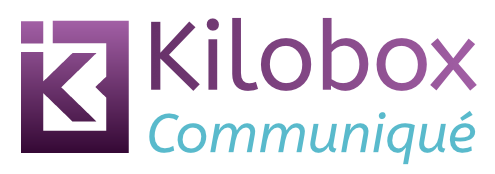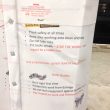As more and more people within a company get directly involved with intranet publishing, more and more pages get published. While the content strategy should direct the quality and location of pages, there are going to be times when messages conflict with each other.

And our modern, powerful search engines can dredge the most peculiar pages up from the depths of the intranet. How is a person supposed to identify the most valuable information?
If Paul in the Orange Department publishes a page or communiqué saying that everyone must use Form XYZ, but Peter in the Apple Department has published a page saying that everyone must use Form ABC, how is Shorna supposed to know what to do?
Well. Meta-data should help her. Shorna should be able to discern the most recent edict, and she may also be able to discover if Paul is more senior than Peter by checking out the People Directory / Org Chart.
But don’t we, as intranet owners, need to do more for Shorna to ensure she doesn’t feel frustrated at the obviously conflicting information?
Well, out-of-date information, especially instructions, can be dangerous; and yet, we can put some faith in Shorna as she searches the intranet and browses around.
Shorna, and everyone, is inundated with conflicting advice, information and reference material every day. We have all learnt to be discerning. We may only click on the first result of a search page, but we will hit the ‘back’ button in milliseconds if we find the page doesn’t meet our expectations.
I don’t mean to ignore the very real risks posed by out-of-date information and conflicting instructions, but we can trust our people, our surfers, to make their own decisions. Engaged, intelligent people may well turn to the intranet and self-serve systems to do things for themselves, but they will also distrust poor quality information and they’ll flag up conflicts.
Imagine if one director said the company should move into Bananas, and another director said they should move into Grapes – the audience would notice this conflict immediately and recognise the need for caution. Shorna wouldn’t enact a new Banana policy if she had heard the conflicting views from the directors.
Yes, our intranets may contain rubbish. We may have rogue pages published by inexperienced people who don’t know what the rest of the company knows, but then, the Internet is like that too.
I would personally prefer an intranet that I could trust 100%, but if we’re to empower people to work and collaborate with each other, that’s no longer possible.
Our people must and can discern the value in our published material for themselves, yet the intranet must be trustworthy. How are we to get the balance right, and ensure those responsible for errors or disagreements get things clear and correct?
[Wedge]Photo credit: tiddlywinker
If you’d like to share or tweet this article, the short URL is: http://kilobox.net/1867









One of the biggest problems we face on our intranet is with media items, such as PDFs.
When people have updated versions of documents they often add them as a new document on their own page, instead of replacing the existing item in our CMS’ media library.
For example, we recently found that several departments had different versions of the organisational structure chart linked on their pages.
If people would just replace existing documents then everyone using that PDF on their page would automatically have the correct version.
Not sure how we can enforce good practice here, but we will certainly be doing everything we can to make our contributors aware.
We have the same problem as Michelle. Our ontributors have a bad habit of duplicating content, especially PDFs.
I partially blame our CMS. We’re running the same CMS version that we launched with five years ago and it’s very outdated. The only way to locate content is by navigating the CMS folder structure, which does not exactly match the intranet navigation. It’s filled with outdated content that needs archiving, but we have no system set up to handle that. Our forms folder alone contains almost 3000 items.
Training is also lacking. Our materials were written when the intranet rolled out and no one really thought about what was needed to maintain the site. Most of our contributors have little or no web experience and don’t understand the search engine or how creating new content doesn’t erase all the links and favorites to the old. I’ve tried improving the training materials and reaching out to contributors when I find they’ve duplicated content, but there’s only so much a team of two can do when we have around 200 contributors.
We’re starting a major project to replatform our intranet that will include a content audit, but the entire project could take up to two years. We have a new team developing a governance plan, and our training materials must address how to update existing content.
If you are using an intranet that supports workflows and expiry dates, such as SharePoint, this can help to combat out of date content hanging around.
For example, when publishing a piece of content an expiry date can be set for, say, 6 months. 2 weeks before the expiry date the owner of the content can be notified automatically via email that the content will expire unless it is reviewed and re-approved. If it is re-approved then the expiry date is reset for another 6 months. If not, the content is un-published (but remains in the system as a draft).
Also, to help searchers you can implement ‘best bet’ (or ‘best guess’) search results. These are manually created search results that admins can ‘force’ to the top of the results page when certain common terms are searched. The best way to decide what best bet searches you should implement is to look at the search logs and see what people are searching for most, and which searches yield the least appropriate results
I know just what you mean Michelle! Instead of replacing the asset with the updated file (PDF) they create a brand new asset with a similar / identical name. They might not even label it as version 2!
It’s frightening! All they have to do is find and edit the original asset… too much to ask I suppose, even with ‘document management systems’ like SharePoint. As John says, making the best use of the document control systems and workflows can help, but like koshtoo says, training and ‘everyday use’ is the thing.
Gosh koshtoo! That sounds just like my current (outdated) CMS too!
Hi John – I’ll use ‘best bets’ on search results pages soon – like ‘Google Ads’ I supposed.
Still, the problem remains when one web page says “Call 192 for the Finance Department” and another web page says “Call 4567 for the Finance Dept”.
I sincerely hope people are discerning!
I assume there are usually two types of content. Official and the more personal.
There should be some governance and communications when creating official content. But I would be surprised if the finance department would create two separate forms for the same purpose.
You could set up an editorial board with representatives from all departments. This board can discuss duplicated and inconsistent content (amongst all the other topics).
Another thing is visitor rating. Let the visitor rate the content and give them an option to notify the owner when content is outdated or inappropriate (with a cc to the intranet manager).
I would say: good governance, clarity on who owns the content and also teach content creators some responsibility (the intranet is not a playground)
And not to forget, an intranet manager needs a lot of patience: reminding others this.
(I recognize the document example as well. This is often caused because people create the document elsewhere and then have to upload it to the CMS as a separate step. – Try to combine these steps in the information flow)
After I posted my comment I found a whole duplicated folder of media items! The original folder was no longer being used and I took great pleasure in deleting it all…
Koshtoo – I agree that if people can’t find the document that’s why they’ll just create a new one. Think that’s been part of our downfall.
The problem we’ve had with expiry dates in that in 1999, 2010 seemed like a very long way away – everyone seemed to set this year as an expiry date, when really they wanted it to stay forever (our current CMS forces you to set an expiry date).
Now we’re trying to delete old pages ahead of our move to a new CMS in the next few weeks and have found loads of stuff that dropped off this year that should still have been live. Having to chase all the owners to see if they want it turned back on.
Although it makes me wonder whether it was ever really needed if no-one has noticed it’s been missing.
Bas – good point about commenting on/rating pages. I think this is something we have planned for our new intranet, but I’m going to go and double check now!
When there is a mass of information, a good old rating system should help. The forces of democracy will kick in, and better quality content will be rated up. That is the best way to sort a mass of information.
This is a constant topic of discussion/debate when intranet managers get together!
A good CMS can help, but won’t solve the problem. We’ve worked with many organisations that have a carefully considered CMS implementation, and still struggle with the same issues…
Governance is clearly important, and it highlights the value of having a central team that has a 20,000ft view of everything.
I agree, though, that we do need to find ways of helping staff better judge the accuracy and relevance of intranet content. On the web, we all use unwritten heuristics to distinguish between medical advice on a government website and a new age promoter. Intranets could do a better job giving clues that help guide site users…
PS. a while back we did a mindmap of all the ways of improving intranet content, and there’s quite a few options!
http://www.steptwo.com.au/columntwo/files/intranetcontent_mindmap.pdf